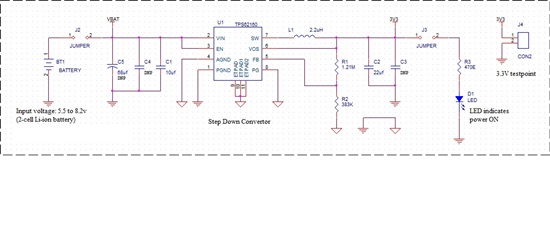Hi, I am using the step down converter TPS62056 in fixed 3V3 Output mode with an output current between 5mA and max 60mA. On the input I have 2 LiIOn Cells in series (7 - 8.4V). I use exactly the circuit of page 1 of the datasheet and the layout of the eval board. Also the caps and coils are from the list mentioned in datasheet.
In labratory and in production eveything works fine. The moment I put them in field (entrence hall of a big company), they are dying one after the other (within 2 to 4 days). I checked forum and internet and I cant find any usefull hint. Has somebody any idea what could be the reason.
greetings
Michael




